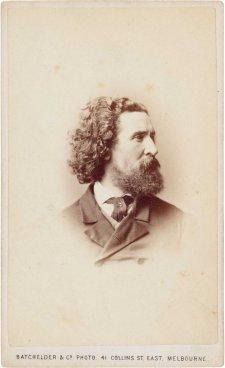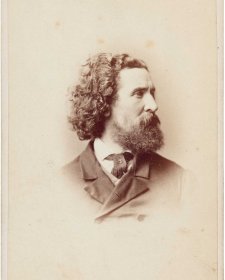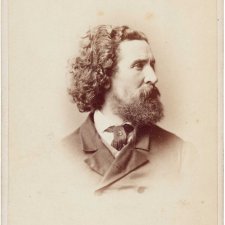Ludwig Becker (1808–1861) was an artist, naturalist and explorer. Born in Germany into an accomplished family, he is thought to have gained his doctorate and worked as a lithographer there. As the country erupted in revolt in the late 1840s, he made for Rio de Janeiro and then Van Diemen’s Land, where he arrived in March 1851. Described by Lady Denison as ‘one of those universal geniuses who can do anything’, Becker proved himself a superb draughtsman (he made his living in Van Diemen’s Land painting portrait miniatures) and a knowledgeable geologist and naturalist. He spent two years on the Bendigo goldfields before settling in Melbourne, where he pursued his meteorological investigations and exhibited artworks. One of his best-known works is a view of Donati’s Comet over Melbourne in October 1858. Only a few years into the life of the new Victoria, plans were set in train for the grand Victorian Exploring Expedition from Victoria to the Gulf of Carpentaria. The mild-mannered Becker was asked to join the trip that was to go down in history as the Burke and Wills Expedition, to collect specimens, keep a diary, and make maps and illustrations along the way. Having started out one of the expedition’s keenest participants – he had been an advocate for the camels that were purchased for the journey at great expense – he was bullied by Burke and died about seven months into the journey, of scurvy and dysentery. His remains lie at Bulloo, not far south of Coopers Creek.
Becker had been a member of the Melbourne German Club, and the biological illustrator Frederick Schoenfeld (c. 1810–1868) produced this portrait for the club as a memorial. Schoenfeld was occupied through the 1860s on Frederick McCoy’s Prodromus of the zoology of Victoria, but when work dried up, he drowned himself in a flooded quarry in Richmond.
Purchased with funds provided by the Australian Decorative and Fine Arts Society Canberra 2000
Australian Decorative & Fine Arts Society Canberra Inc. (3 portraits supported)



On one level The Companion talks about the most famous and frontline Australians, but on another it tells us about ourselves.



Joanna Gilmour discovers that the beards of the ill-fated explorers Burke and Wills were as epic as their expedition to traverse Australia from south to north.



Visit us, learn with us, support us or work with us! Here’s a range of information about planning your visit, our history and more!